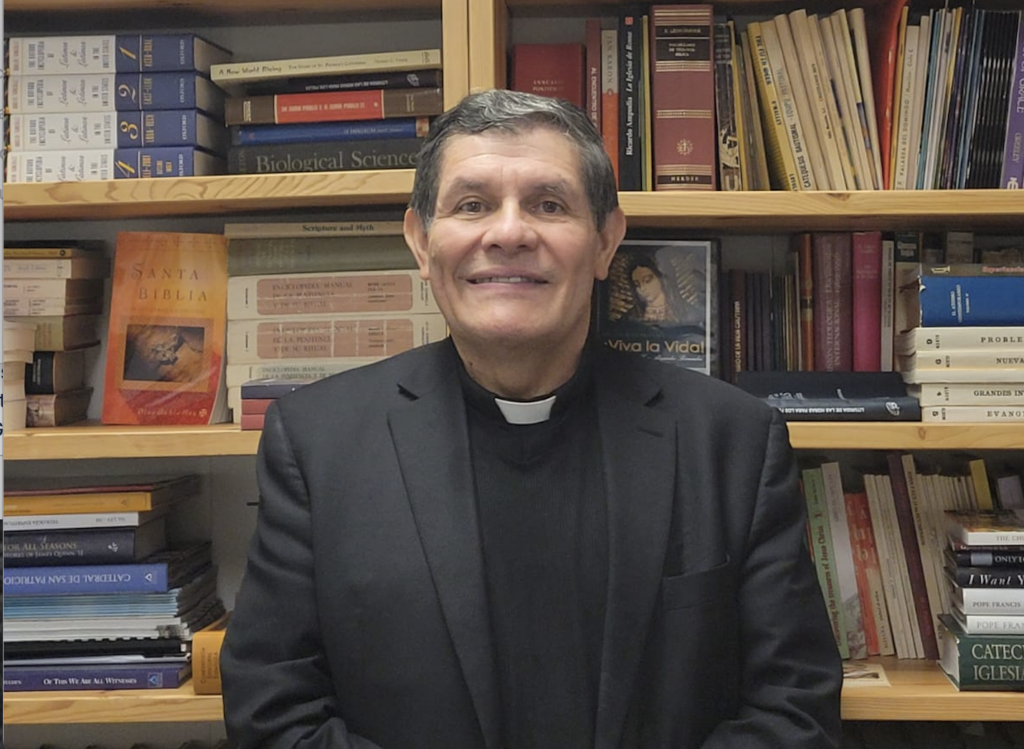
Angels in the Church Fathers and the Magisterium
By: Padre Lorenzo Ato
The opinions of the Fathers, in the first centuries, are not uniform

The Fathers of the Church endorsed the New Testament conception of angels, assuming an apologetic stance, distancing themselves from the conceptions of Judaism and paganism of the time. Biblical descriptions of the appearances of angels led, in the first centuries, some fathers of the church to attribute to the angels a type of “corporeality” of an ethereal and subtle nature, a relative immateriality. “Some Fathers interpreted the appearances of angels saying that they have their own ethereal corporeality or that to be visible they assume a foreign material body” (Seemann, M. “Angels and demons in their relationship with man”, in: Mysterium Salutis. Cristiandad, 2nd. Ed. Madrid 1977, p. 757).
The opinions of the Fathers, in the first centuries, are not uniform. Saint Augustine himself is not clearly decided on the subject of the total spiritual nature of angels. It will be necessary to wait until high school for the purely spiritual nature of angels to be specified. On the other hand, as Seemann points out, “that angels lack all kinds of matter is something that is not expressly defined by the magisterium” (Seemann, M. O. Cit., p. 756); however, it is a general opinion of theologians; and it is assumed by the magisterium of the Church.
The Fathers of the Church were also concerned with the multiplicity of angels and their hierarchical ordering. The distribution of angels into nine choirs goes back to Pseudo Dionysus the Areopagite, around the year 500, who subdivided the nine choirs into three hierarchies of three choirs each [angels, archangels, principalities/virtues, dominations, powers/thrones, cherubs, seraphim] (Cf., Seemann, O. Cit., p. 757); however, on that point, there was no uniform position either. The Fathers of the Church, picking up some elements of late Judaism, affirmed that both the Church as a whole, as well as the churches, had the protection of angels. Subsequently, the idea that each person would also have the protection and assistance of an angel was affirmed. The idea of the “Guardian Angel” would have been borrowed from late Judaism; although it was sought to find a biblical support in the words of Jesus regarding the angels of the “little ones” continually see the face of God (Cf., Mt 18, 10). With the word “little ones” Jesus also refers to the “spiritually poor”, to those who suffer from “exclusion” or “marginalization”.
There are a few texts of the extraordinary and ordinary magisterium of the Church referring to angels. In the Council of Braga (561), against the Manichaeans and Priscillia’s, it is affirmed that the angels are not emanations of the divine substance (Cf., Dz. 235). In the IV Lateran Council (1215), it is taken for granted that one must believe in the existence of angels; what is specified there is that they were created by God from nothing and that they are spiritual beings (Cf., Dz. 428).
In the Middle Ages, in high scholasticism, Saint Thomas Aquinas elaborated the treatise on angels, as part of the Summa Theologica, “on the basis of the thesis that the nature of angels is totally spiritual [I, q. 50, a. 1] (Seemann, M.O. Cit., p. 755). Saint Thomas also dealt with the “Guardian Angel”, quoting Saint Jerome, who said that “great is the dignity of souls, since each one of them, from birth, has an angel in charge of guarding it” [Commentary on the Gospel of Matthew, III, 18, 10] (Suma Theologica, I q. 113, a.2). Thomistic scholasticism does not add anything significant to the theology developed by St. Thomas about angels. “Until the Modern Age there is no return to the biblical affirmations themselves” (Ibid.).
The Roman Catechism (1566) taught that God has given angels the task of caring for the human lineage and helping men in the face of danger, so that they do not suffer any serious harm (Cf., Cap. IX, IV, 1085). The protective mission of the angels stands out there.
The First Vatican Council (1870) does not add anything with respect to the teaching on the angels of the magisterium of the Church but repeats what was said in the Lateran IV (Cf., Dz. 1783). Pope Pius XII (1950) alludes to the erroneous doctrines that question, among other things, that angels are personal beings (Cf., Encyclical Humani Generis, No. 20).
In the Profession of Faith of Pope Paul VI (June 30, 1968), on the occasion of the closing of the Year of Faith, known as the “Creed of the People of God”, an express reference is made to angels: “We believe in one God, Father, Son and Holy Spirit, Creator of visible things – such as this world in which we spend our brief lives and of invisible things – such as pure spirits, which we also call angels” (No. 8). It is also pointed out that the angels participate in the “divine government of things, exercised by the glorified Christ” (No. 29).
The current Catechism of the Catholic Church dedicates numbers 328 to 336 to deal with the subject of angels. He begins by pointing out that the existence of angels is a “truth of faith” and that “the testimony of Scripture is as clear as the unanimity of Tradition” (No. 328). The angels “are servants and messengers of God”; they contemplate the face of God (Cf., Mt 18, 10), they are “agents of his orders” (N. 329); they have intelligence and will, they are “personal and immortal creatures” and “exceed visible creatures in perfection” (N. 330); they belong to Christ, because “they were created by and for Him” and because “they have made them messengers of his plan of salvation” (No. 331).
The Catechism, citing various Biblical passages, indicates the role of angels in the history of salvation, from the Old Testament and particularly in the life of Christ and his glorious second coming (nun. 332-333). Mention is also made of the role of angels in the life of the Church, which benefits “from the mysterious and powerful help of angels” (N. 334); in the Liturgy: in the mass (the song of the “Saint”); in the liturgy for the dead when he prays to be taken to Paradise by the angels (No. 335). The Church also teaches us that the lives of people, from childhood to death, enjoy the protection of angels and their intercession. Hence, the believer can constantly invoke them by rendering them a cult of veneration. Citing a text by Saint Basil, the Catechism tells us that “each faithful has an angel by his side as protector and shepherd to lead him to life [S. Basilio, Eun. 3, 1]” (No. 336). There is a clear allusion to the “Guardian Angel”; although on this point, the magisterium of the Church has not said that it is a “truth of faith”. This does not imply that it is not advisable to have a special devotion to the Guardian Angel, as in fact many saints have cultivated it.

